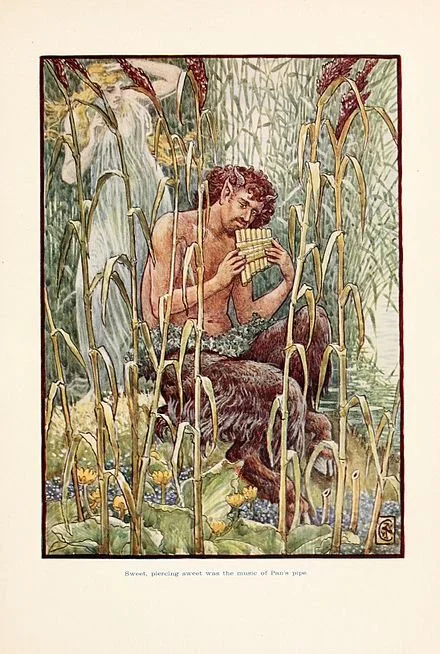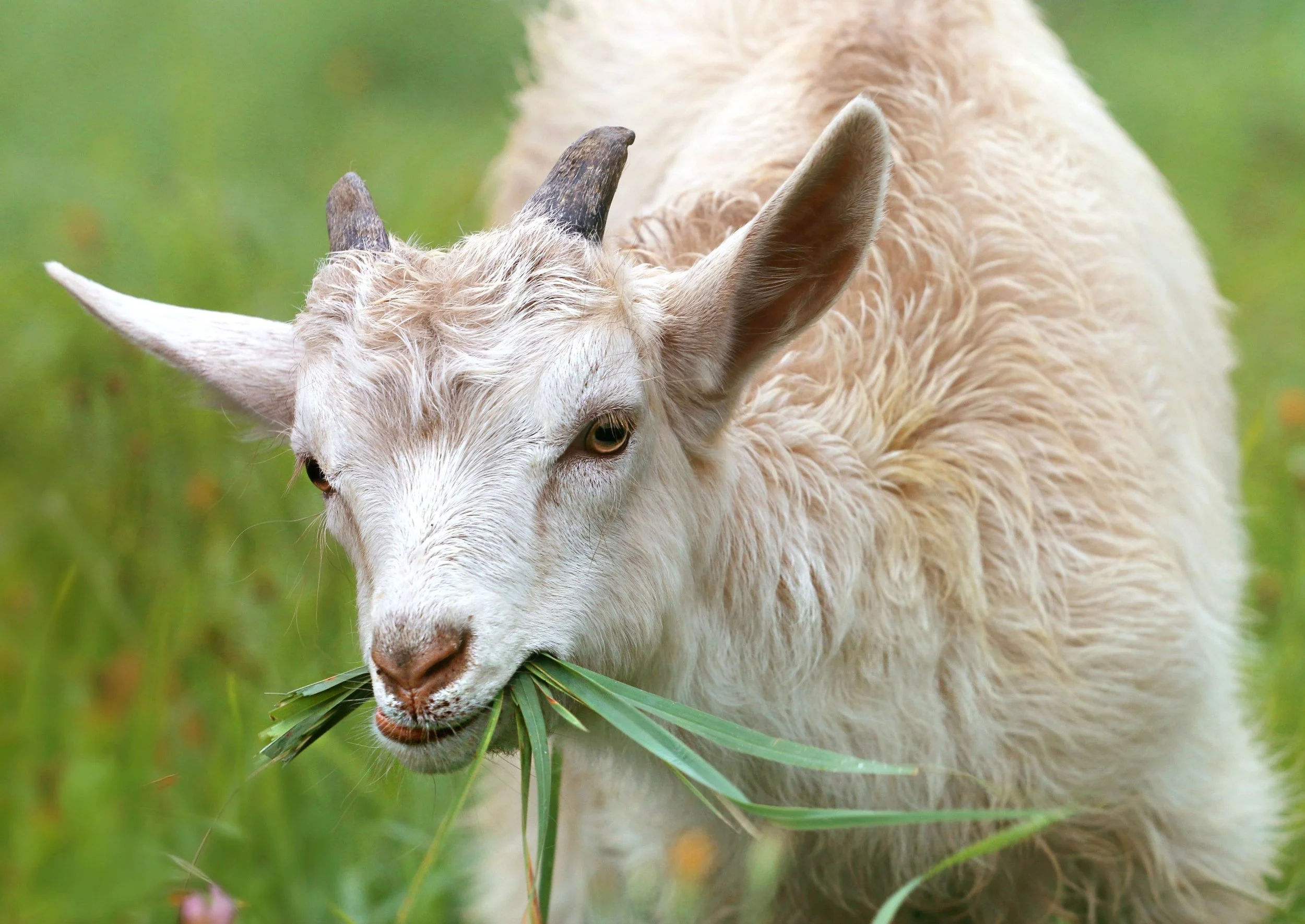Goat Symbolism By Author Mary Jo Hazard, M.A., M.F.T
Goat Symbolism
By Author Mary Jo Hazard, M.A., M.F.T
Spring in Palos Verdes is heaven on earth--warm weather, green rolling hills, colorful wildflowers, and goats—lots of goats. Goats have been significant to man for over ten million years. They’re sturdy surefooted animals with hard heads, rectangular pupils, horns, and broad cloven hooves that allow them to climb vertical slopes effortlessly.
There are two types of goats, mountain goats, and domestic goats.
Mountain goats are wild. They have thinner lighter skulls and their horns curve backward. They usually live in rugged mountainous areas high above sea level. Their coats are thick and white, so they blend in with the snow, and according to National Geographic, mountain goats can leap 12 feet in the air.
Neolithic farmers in the Middle East and Western Asia were the first to domesticate goats. The goats became dependent on the farmers who cared for them and the farmers reaped the benefits. Milk and meat (cabrito) from the goats kept the farmers and their families well nourished; reddish-brown goat pelts kept them clothed and burnt goat droppings kept them warm and cozy.
Throughout the ages, goats have been important symbols. In Greek mythology, Pan, a half-goat and half-man, is known as the God of the Wild--the unpredictable virile ruler of nature and pasturelands. Horns adorn his head; his feet are cloven hooves, and his strength is well renowned.
"Sweet, piercing sweet was the music of Pan's pipe" reads the caption on this depiction of Pan (by Walter Crane)
Everything about Pan is magical—even his voice. Legend tells us that when Pan’s friend was fighting for his life in a battle, Pan let out a chilling screech. The petrified enemy dropped his weapon, covered his ears with his hands, and fled in disgrace—hence the word “panic,” which most of us use without ever considering its unusual origin.
Pan liked the ladies. He fell in love with the river nymph Syrinx, but she wanted nothing to do with him. Frightened, she asked the other nymphs for help. They took Syrinx to a thick bed of slender river reeds and made her on of them. She blended in so well that Pan couldn’t distinguish her from the others. Frustrated, he broke the reeds into pieces. Immediately regretting what he’d done, he gathered up the reeds and held them close to his face. His breath rustled through the reeds making an exquisite sound. Pan was so captivated that he made them into a flute. He is often pictured with the flute, perhaps pretending that he’s holding Syrinx, the beautiful nymph he loved and lost.
In Christianity, the goat was a symbol of sacrifice. It symbolized demonic forces, wicked men, oppressors, and Satan. The bible depicts goats as deceitful, cunning, and satanic.
A goat was the first animal to have been sacrificed in the bible (Genesis 22:13) when Abraham was about to sacrifice his only son Issac. After that, sacrificing a goat as a sin offering was customary—you could atone for your sins if you offered up a goat.
In other Christian traditions, the goat represents the crucifixion of Jesus and how he willingly allowed himself to die for the sins of all humankind.
African cultures believe the goat signifies fertility, health, and prosperity. It is one of the most life-sustaining animals in their cultures and like the Neolithic farmers, Africans depend on goats for their every day needs.
Native Americans considered goats symbolic of fertility, sexuality, and creativity. They considered them sacred, and many Native American legends, stories, and rituals centered around goats.
On the Palos Verdes Peninsula, for over ten years, two herds of goats have munched their way through the tall woody weeds and the non-native invasive plants that thrive on the steep rocky slopes, making the residents smile and protecting them from dangerous brush fires.
The Palos Verdes Peninsula Land Conservancy uses the goats to remove their unwanted and overgrown plants from their property. It costs them about $100 a day a goat. To defray expenses, the Conservancy came up with an Adopt-A-Goat fundraising project. Once a year, donors can adopt a goat and have a souvenir picture taken with one of the them at the popular event—another example of the beneficial relationship that goats and man have had for millions of years.
Bio:
Mary Jo Hazard, M.A., M.F.T., is a retired psychotherapist, the author of three children's books, The Peacocks of Palos Verdes, P is For Palos Verdes, and Palo's World, and a coming-of-age novel, STILLWATER. Hazard writes a bi-weekly column, PV Neighbors, for the Peninsula News. She loves living on the Palos Verdes Peninsula and spending time with her husband and family. Her mission is to help remove the stigma of mental illness and help others live their lives to the fullest.
Amazon author link:
https://www.amazon.com/Mary-Jo-Hazard/e/B004285HS6%3Fref=dbs_a_mng_rwt_scns_share









